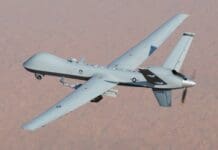This post is also available in:
 עברית (Hebrew)
עברית (Hebrew)

Preparing ahead of emergency situations and mass disasters on a national scales is not ’recommended’ or subject to considerations of cost or likelihood. Rather, in light of the recent earthquake that hit Nepal, as well as additional national disasters worldwide in recently years (the tsunami in Japan, lethal storms in the US and so on), it is simply necessary to compel all business and national infrastructure managers to meet the highest possible standards. They should also be made legally responsible to do so.
The major hurdle lies in simulating such calamitous events. We realize that when a powerful earthquake hits, buildings will collapse and infrastructure will suffer damages. We are able (or at least supposed to be able) to prepare ahead of such scenarios. Nevertheless, without actually being able to carry out real simulation across the board, involving the entire network of responders and managers – we shall never truly know what was ’neglected’ and what small detail (which did not occur to us, at we took it for granted) left unchecked would end up not being available when emergency unfolds. There are so many examples for this.
We can build a secure underground data center (e.g., a central computer center), run scenarios and ’war games’ and believe ourselves to ready for anything. Nevertheless, if a water main that runs over the underground center should crack due to an earthquake, the flood of water would render the center, along with all its backups, worthless.
Suppose we prepare a facility of any kind and dub it ’the perfect solution’. Then, during an emergency situation, the person in charge would receive a notice their family perished when their building collapsed. He or she might go berserk and destroy everything. How could we possibly prepare for this kind of eventuality? Case in point: the German Wings pilot.
Register to iHLS Israel Homeland Security
There are no ’magic solutions’ for the issues I raised above. Only in hindsight, could we realize where we went wrong and what estimate was off. Yet this is no reason to give up, but rather to exercise extra caution and invest even more in proper preparedness, at least in those things we are aware of. Readiness consists of being able to issue alerts, various abilities to minimize the damage (even prevention), rapid response to contain the event and the ability to return to normal. We ought to disseminate these capabilities and allow the forces that feature them maximal independence during emergencies, while supporting monitoring capabilities and centralized response abilities to put national resources into action.
A national emergency radio system, or central command & control (C2) systems are a prerequisite for effective national crisis management. Nevertheless, they do not come in lieu of independence and local capabilities.
Monitoring, command and control systems, such as the one developed by mPrets (which developed the C2 system for ’Iron Dome’ as well as for Israel Electric Corporation) provide a good example. Based on the MPPC concept: Monitor, Predict, Prevent, Control, this system is built in a centralized-cum-decentralized way. Thus, it features both independence as well as structured management hierarchy.
As Israel is an advanced Western nation, should disaster strike, it would not only impact those hit directly, but rather each and every one of us, adversely affecting our way of life. We ought to invest more resources and pay greater attention to this issue – rather than just heed painful reminders.

























